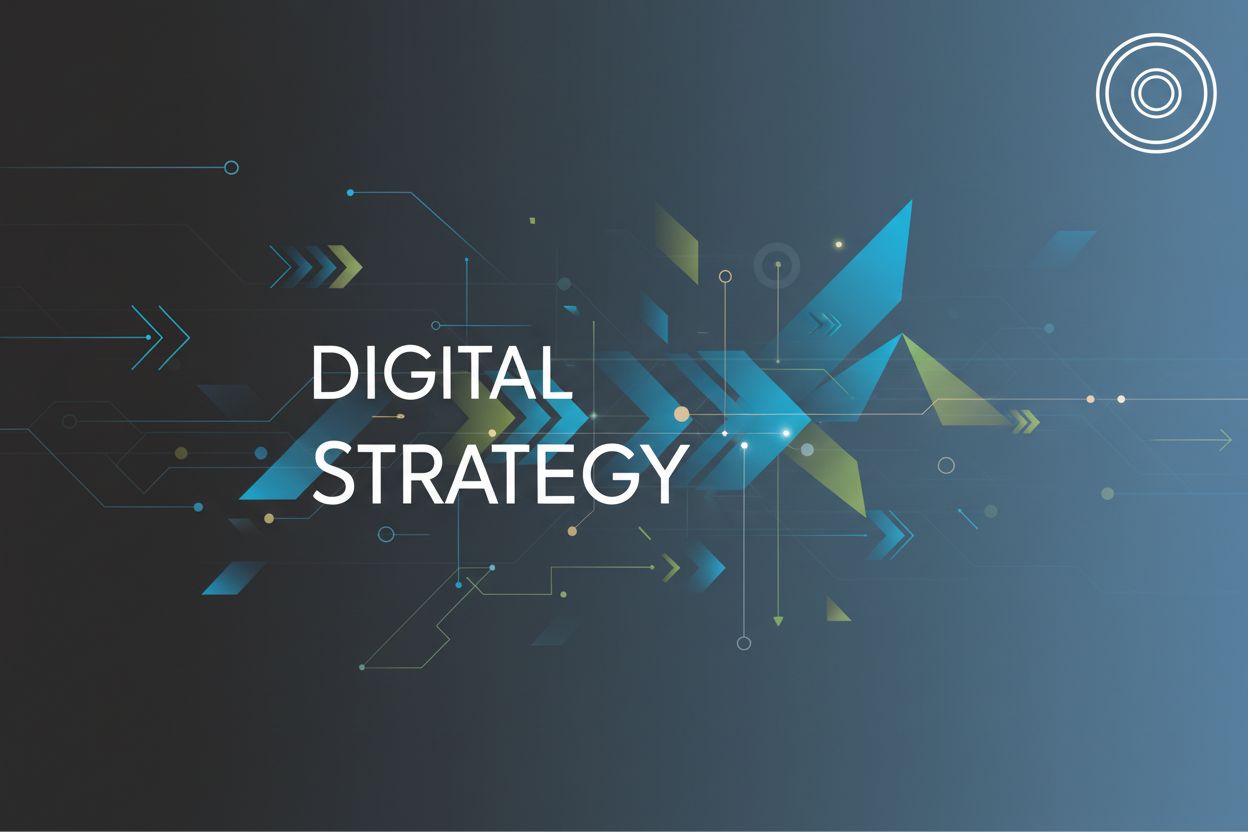What Are the 7 Stages of the Strategic Planning Process?
TL;DR
Understanding the Strategic Planning Landscape
Okay, let's dive into this strategic planning thing. Ever feel like your company's driving without a map? Yeah, strategic planning is kinda like GPS for businesses, but instead of just getting you to the grocery store, it helps you nail those long-term goals.
Think of it as a structured process – not just some brainstorming session. It's about laying down the groundwork for where you wanna be, like, five years from now.
According to OBS Business School, strategic planning involves defining goals, analyzing the environment, and implementing strategies. (Strategic Planning Basics) It keeps everyone on the same page.
It's not just pie-in-the-sky dreaming, it's about aligning that big vision with real, actionable steps – and making sure you're not wasting resources.
Direction is key: It gives you that North Star, making sure everyone's rowing in the same direction and not in circles.
Execution, baby: Turns those lofty goals into actual things you do, day in and day out.
Adapt or die: Helps you see those market changes coming and dodge 'em like a pro or, you know, maybe even capitalize on 'em.
Teamwork makes the dream work: Gets everyone – from marketing to sales – vibing on the same mission.
See the gold: Reveals those hidden opportunities for growth you might've missed otherwise.
Basically, strategic planning is how you turn "we wanna be awesome" into "here's how we're gonna be awesome."
Now, let's talk about the first step: building awareness. This means really understanding your current situation – what's working, what's not, and what's happening around you in the market. It's about getting a clear picture before you even think about where you're going.
The 7 Stages of the Strategic Planning Process
Okay, so you've got everyone at least thinking about strategic planning, right? Now comes the fun part... kinda. It's time to set some goals that don't just sound good, but actually mean something.
We're talkin' S.M.A.R.T. goals here – Specific, Measurable, Achievable, Relevant, and Time-bound. Bet you've heard that acronym before. But, like, how do you actually use it?
- Specific: Don't just say "increase sales." Say "increase sales of product X by 15%." See the difference?
- Measurable: Gotta track your progress, right? "Improve customer satisfaction" is nice, but "increase our customer satisfaction score from 7 to 8.5 out of 10" gives you something to measure.
- Achievable: Be realistic. Can you really double your revenue in a year? Maybe, but probably not.
- Relevant: Does this goal actually matter to your overall strategy? If it doesn't, ditch it.
- Time-bound: When do you want to achieve this goal by? "Someday" isn't an option.
This isn't just theory, it's practical stuff.
- For instance, a healthcare provider might aim to reduce patient wait times (specific) by 20% (measurable) within six months (time-bound) by implementing a new appointment scheduling system (achievable and relevant).
- Or a retail chain might want to boost online sales (specific) by 30% (measurable) in the next quarter (time-bound) through targeted social media campaigns (achievable and relevant).
Here's the thing: S.M.A.R.T. goals aren't just for the ceo, or senior management. It's about getting everyone on board. Cross-functional teams are your friend here.
A manufacturing company deciding to improve production efficiency needs input from engineering, operations, and even sales to set goals that are both ambitious and realistic.
And, it's not just about revenue. A digital transformation project, for example, might have a goal to "implement a new crm system (specific) in all departments (relevant) by the end of q3 (time-bound), measured by user adoption rates of 90% (measurable) after training (achievable)."
Diagram 1 visually represents the interconnectedness of the S.M.A.R.T. goal-setting process within the broader strategic planning framework, showing how specific, measurable, achievable, relevant, and time-bound objectives drive the entire initiative.
These integrated S.M.A.R.T. goals act as a compass. Thestrategyinstitute.org describes this as providing clarity and direction for the strategic planning process. So, you're not wandering aimlessly.
The other stages of strategic planning include:
- Building Awareness: Understanding your current situation, market, and internal capabilities.
- Setting Goals: Defining what you want to achieve, using frameworks like S.M.A.R.T.
- Analyzing the Current State: A deep dive into your strengths, weaknesses, opportunities, and threats (SWOT analysis).
- Formulating Strategy: Developing the overarching plan to achieve your goals.
- Implementing Strategy: Putting the plan into action through specific initiatives and projects.
- Monitoring and Evaluation: Tracking progress, measuring outcomes, and making adjustments.
- Review and Adaptation: Regularly reassessing the plan based on performance and changing conditions.
Next up, we gotta figure out where we are right now. That's the "analyzing the current state" part.
Real-World Examples and Case Studies
Strategic planning's not just for textbooks, y'know? Companies actually use this stuff...sometimes successfully.
- Netflix constantly tweaks its recommendations based on what we're binge-watching. This is a prime example of monitoring and evaluation, where they analyze user data (measurable outcomes) to refine their service (strategy implementation) and stay relevant (achievable and relevant goals).
- Ever notice how McDonald's menus change depending on where you are? That ain't an accident. They're analyzing trends (building awareness, analyzing current state) to tailor their offerings (strategy formulation and implementation) to local markets. While they're good at adapting, a more robust strategy could involve proactively addressing evolving consumer preferences for healthier options.
- The ethical piece is crucial in strategic planning. Companies need to consider the ethical implications of their strategies, like data privacy for Netflix or sourcing practices for McDonald's. This falls under analyzing the current state and formulating strategy, ensuring that plans are not only profitable but also responsible.
Conclusion
Strategic planning, huh? Feels like a corporate buzzword sometimes, but honestly, it's the difference between flailing and actually, y'know, succeeding.
Strategic planning is essential for long-term organizational success. (Why Is Strategic Planning Important? | HBS Online) You can't just wing it and hope for the best. It's about having a roadmap, even if you occasionally detour for ice cream. This process ensures alignment and efficient use of resources, like making sure your marketing team isn't pushing a product nobody wants.
The seven stages provide a blueprint for defining aspirations and measuring outcomes. It's not about rigid adherence, but a framework. Think of it like a jazz solo – you've got the chords, but you can improvise a little. By following these stages, businesses can set realistic goals and track their performance.
Clarity of vision, stakeholder inclusion, and data-backed decisions are key. It's no good if only the ceo knows the plan. Everyone needs to be on board, and decisions should be based on more than just gut feelings. A transparent process builds trust and gets everyone invested.
Organizations can manifest purposeful plans for enduring success through vigilance. It's not a "set it and forget it" deal. Markets change, technology evolves – you gotta keep your eye on the ball. Regular monitoring and adjustments are as important as the initial plan.
Imagine a small retail business wants to expand online. They might start by assessing their current website (or lack thereof) and understanding their customer base (building awareness). Then, they'd set a s.m.a.r.t. goal to increase online sales by 20% in the next year. They'd then formulate a marketing strategy, implement a new e-commerce platform, and track website traffic and sales conversions. This iterative process of planning, doing, and checking is fundamental to achieving their objectives.
Ultimately, strategic planning isn't just for big corporations. It's a tool for any organization that wants to take control of its future and, well, not just hope for the best. It's about being proactive, not reactive, and making sure you're driving the bus, not just along for the ride.





